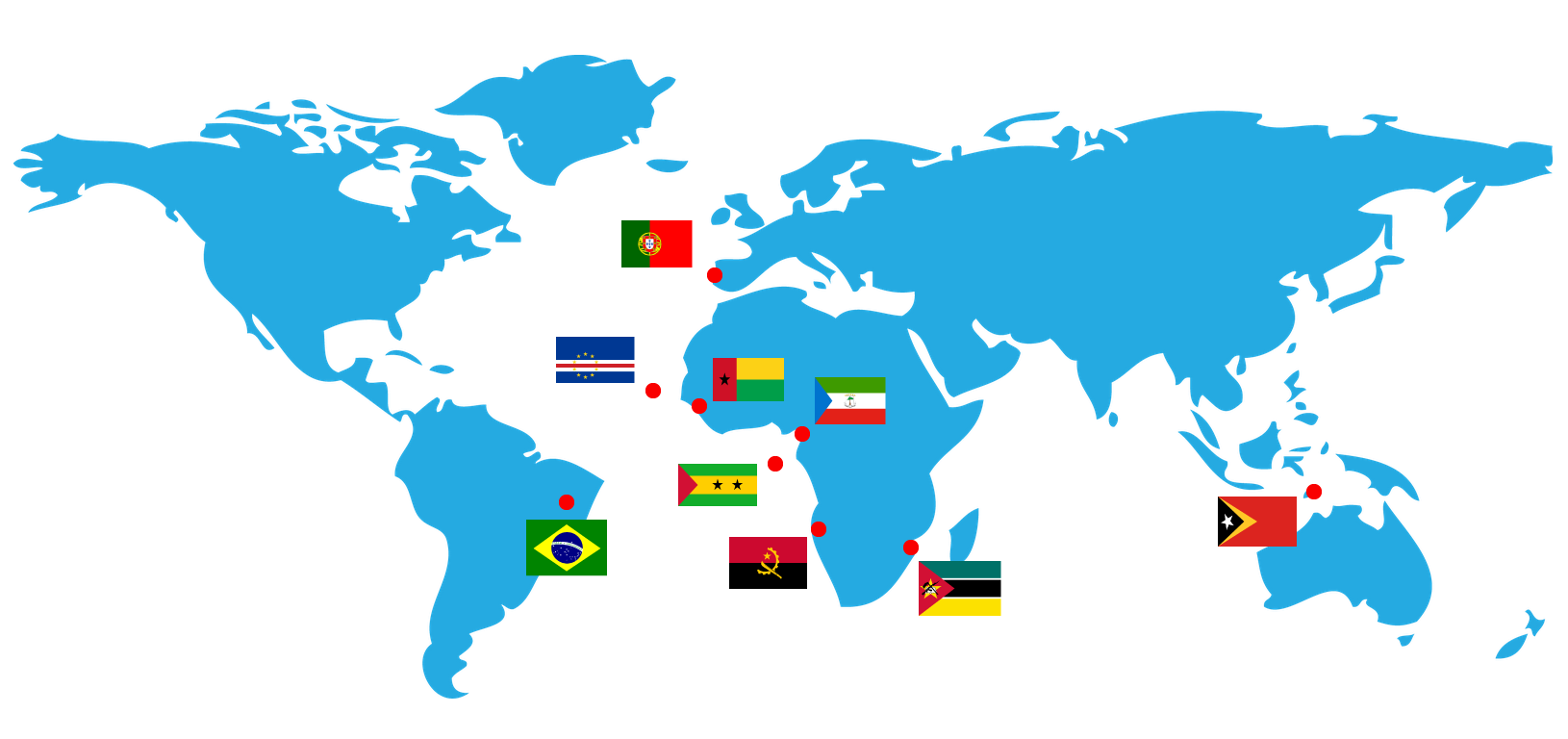We all know that Portuguese is the official language of Portugal and Brazil. But, did you know that Portuguese is also spoken in African and Asian countries?
African countries such as São Tomé and Príncipe, Angola, Cape Verde, Guinea Bissau, and Mozambique have Portuguese as their official language too! And Asian countries/regions such as East Timor and Macau have Portuguese as their co-official language.
Portuguese is also spoken in India (Goa, Diu, Daman), Malaysia (Malacca) and Sri Lanka.
Differences between Brazilian Portuguese and European Portuguese
European Portuguese was evolved from the spoken form of non-Classical Latin in the Western Iberian Peninsula. In the 12th century, Portugal officially became a kingdom and Portuguese was gradually adopted as the preferential language , being used not only in poetry but also in official documents. During Renascence, in the early 16th century, the publication of “Cancioneiro Geral” by Garcia de Resende marked the evolution of the “Old Portuguese” to the “Modern Portuguese” as known today.
In the early 16th century, Portugal also started the South America colonization and Portuguese later become the official language of Brazil. In the beginning of the colonization, European Portuguese coexisted with Indigenous and African languages spoken either by the native population or the African slaves brought to Brazil to work on the plantations and mines. By the end of the 18th century, the Portuguese government decreed Portuguese as the official language of its colony.
Brazilian Portuguese was largely influenced by Indigenous and African languages. It also incorporated words from other European languages such as French and Italian, becoming very distinct from European Portuguese. Today, Brazilian Portuguese differs from European Portuguese in terms of pronunciation, vocabulary, spelling, and the use of formal and informal speech. Here are some examples:
The silent letter c is still written in European Portuguese but not in Brazilian Portuguese.
Intersection - interseção (BP) intersecção (EP)
Brazilian Portuguese also uses ô instead of ó in some words.
Poland - Polônia (BP), Polónia (EP)
Phenomenon – fenômeno (BP), fenómeno (EP)
In Portugal, the personal pronoun “tu” (you) is largely used in the informal speech. In Brazil, “você” (you) is the personal pronoun mostly used in informal situations.
Portuguese also uses a verb + infinitive, while Brazilians use a verb + gerund to express the same idea.
I’m speaking – Eu estou a falar (EP), Eu estou falando (BP)
Several things are named differently in both languages.
ice cream – soverte (BP), gelado (EP)
suit – terno (BP), fato (EP)
tea-cup – xícara (BP) chávena (EP)
conversable – conversível (BP), descapotável (EP)
And some words have a completely different meaning in both languages.
apelido – nickname (BP), last name (EP)
propina – bribe (BP), tip (EP)
banheiro – bathroom (BP), lifeguard (EP)
canalha – villain (BP), group of kids (EP)
Words incorporated in the Brazilian Portuguese vocabulary from:
Tupi-Guarani: urubu (vulture), pipoca (popcorn), cupim (termite)
French: abajur (lamp), greve (strike)
Italian: cantina, bússola (compas), aquarela (watercolor)
African: samba (Brazilian dance), camundongo (mouse), miçanga (beads)
The Orthographic Agreement and translation
In 1980, the Sciences Academy of Lisbon and the Brazilian Academy of Letters started the negotiation to create a unified orthography for Portuguese. In 1990, the Portuguese Language Orthographic Agreement was signed by Portugal, Brazil, Guinea Bissau, Angola, Mozambique, São Tomé and Príncipe, and Cabo Verde. In 2004, East Timor signed the Agreement as well. In 2009, the new orthography rules started to be adopted by Brazil and Portugal.
The Portuguese Language Orthographic Agreement aims to simplify and unify the Portuguese orthography rules and increase Portuguese awareness around the world. However, European and Brazilian Portuguese have evolved in different ways over the years and the reform can’t eliminate the cultural and historical influences that make both languages distinct.
In other words, even though the reform has promoted a Portuguese standardization there’s no “neutral” Portuguese and in order to translate a document, we need to choose which language variant is appropriate for the target audience.


